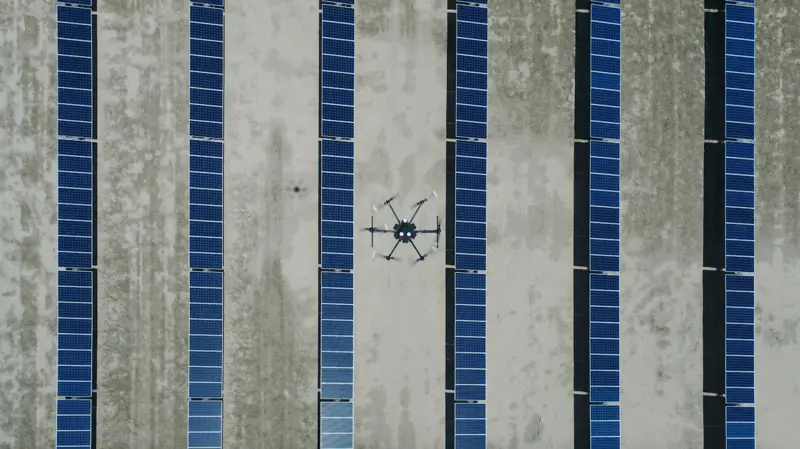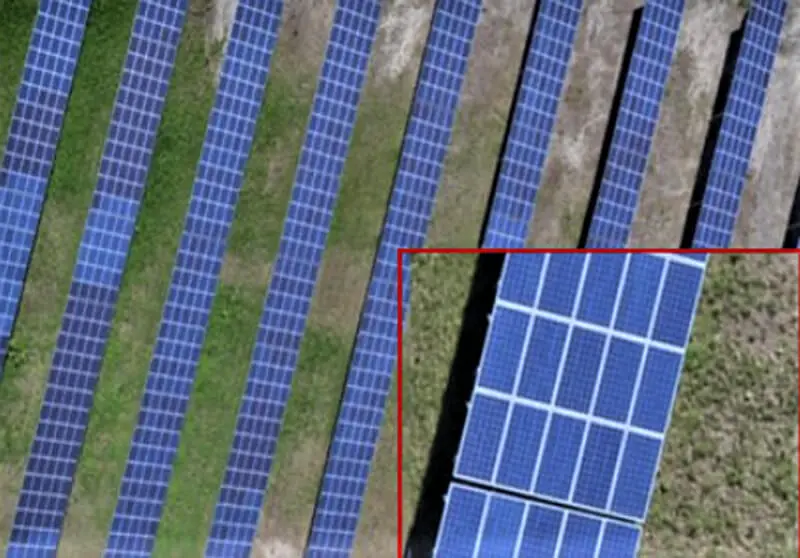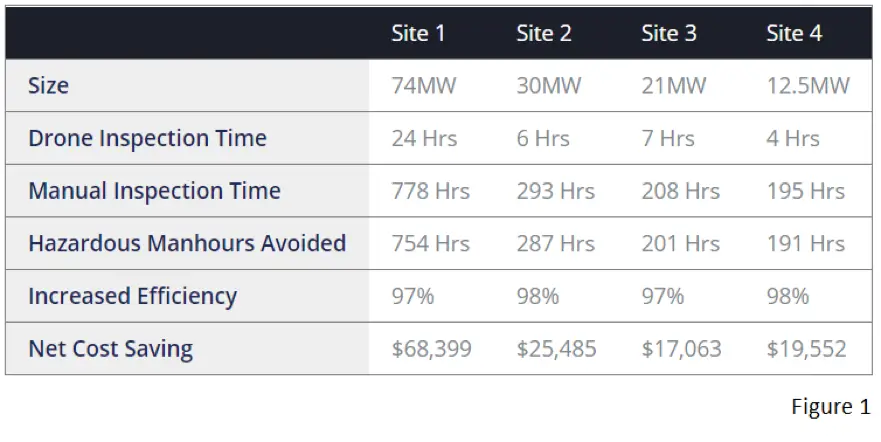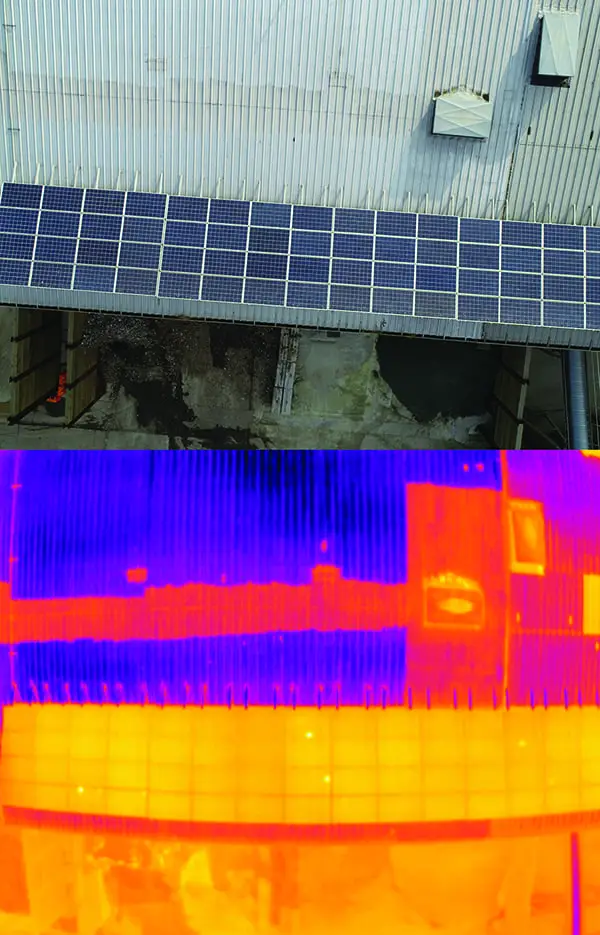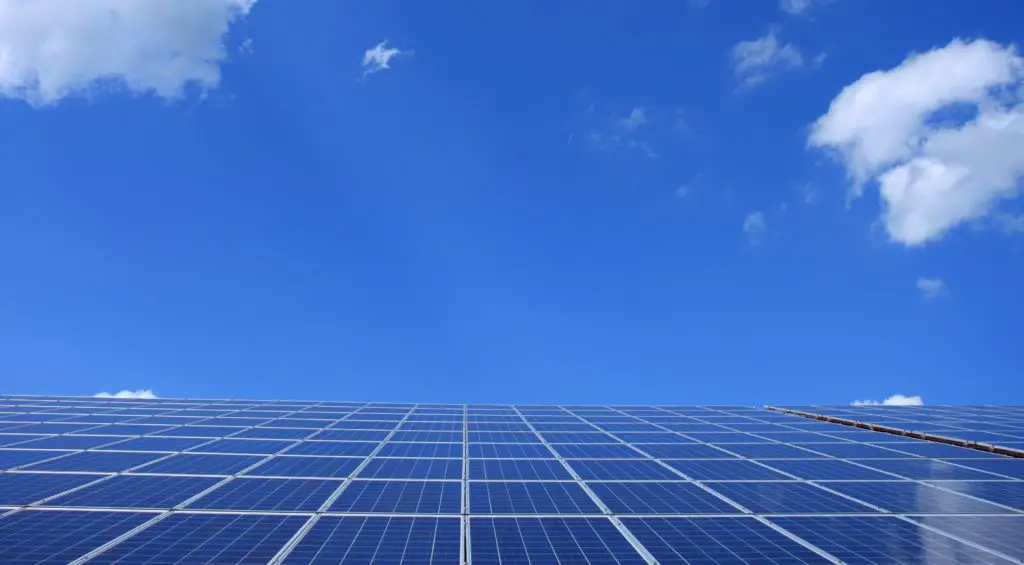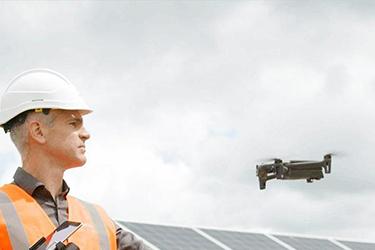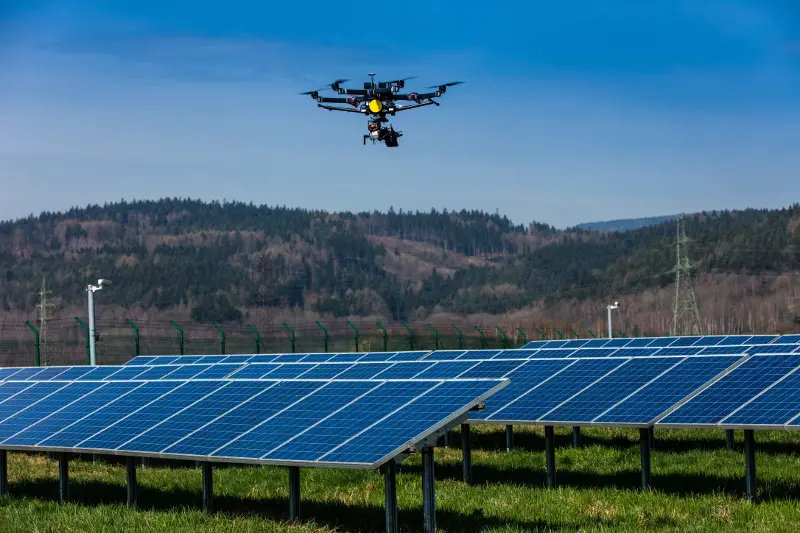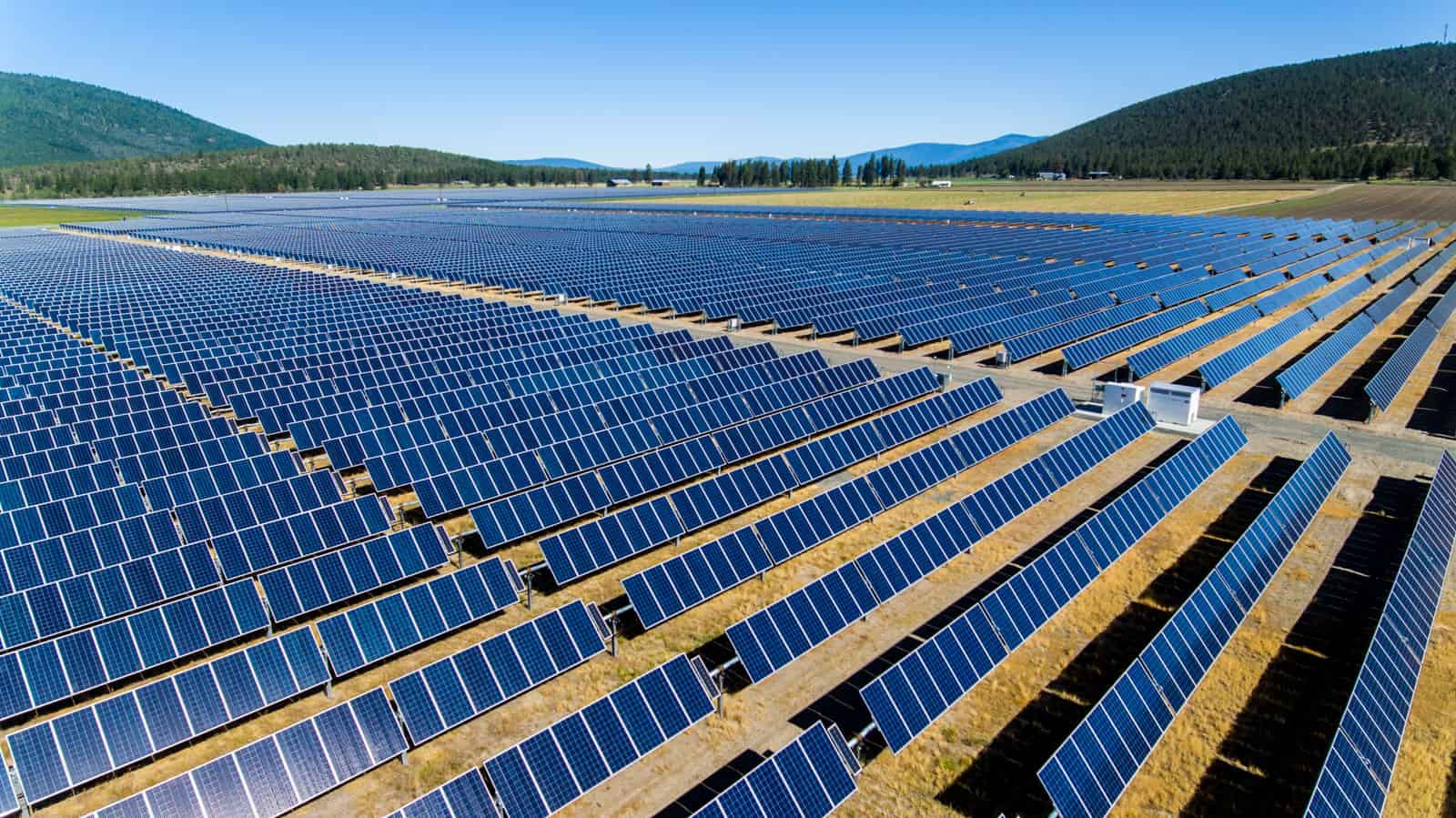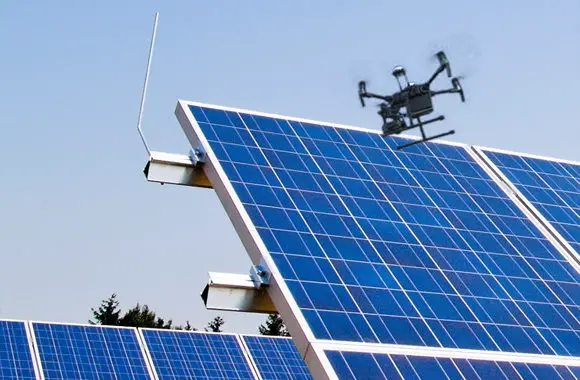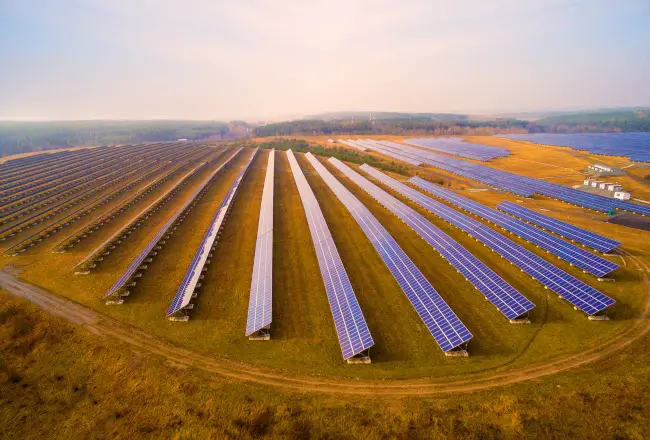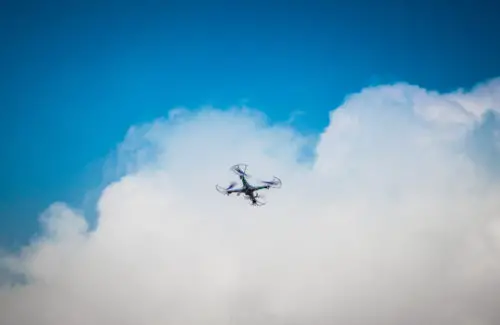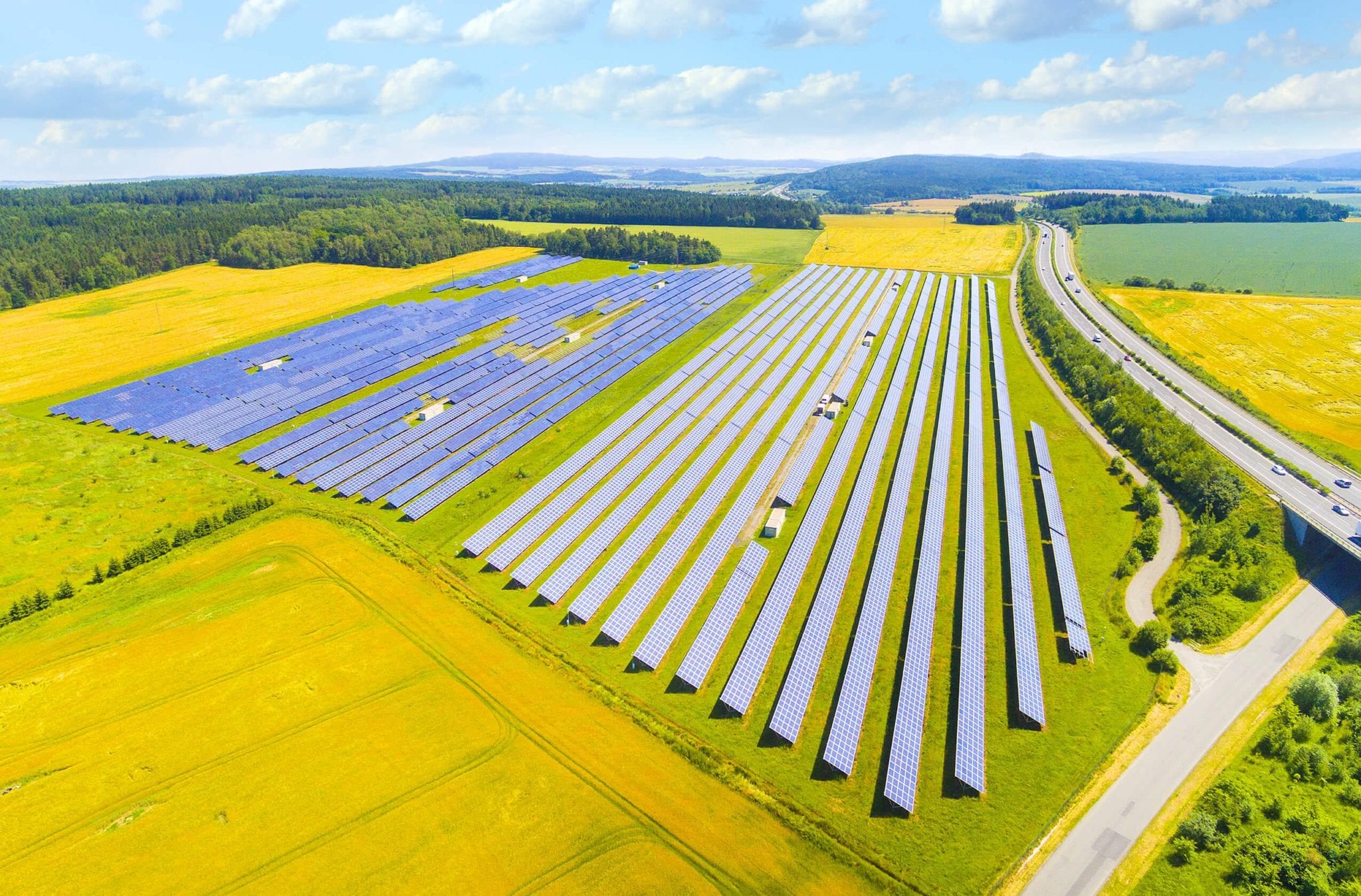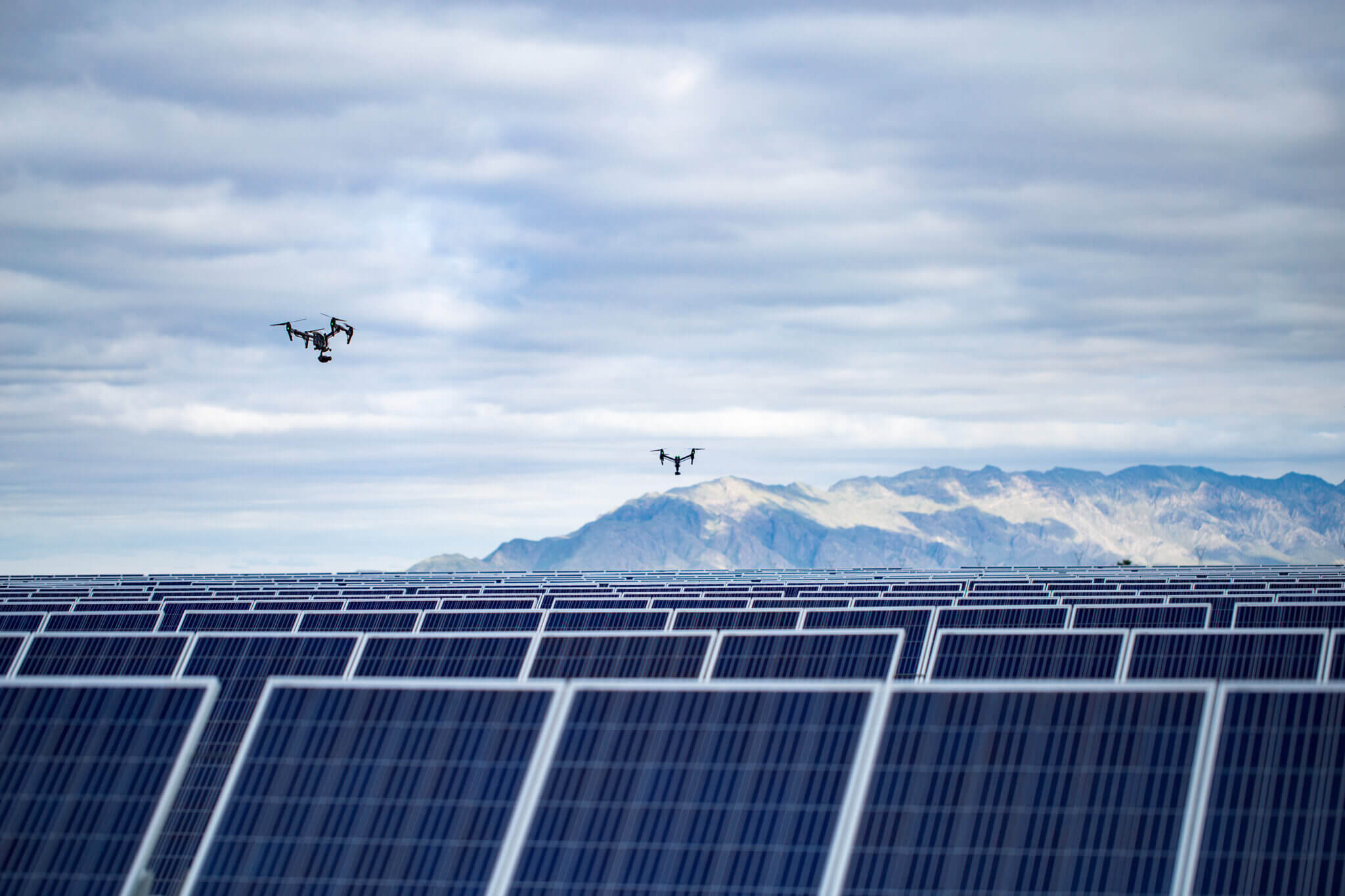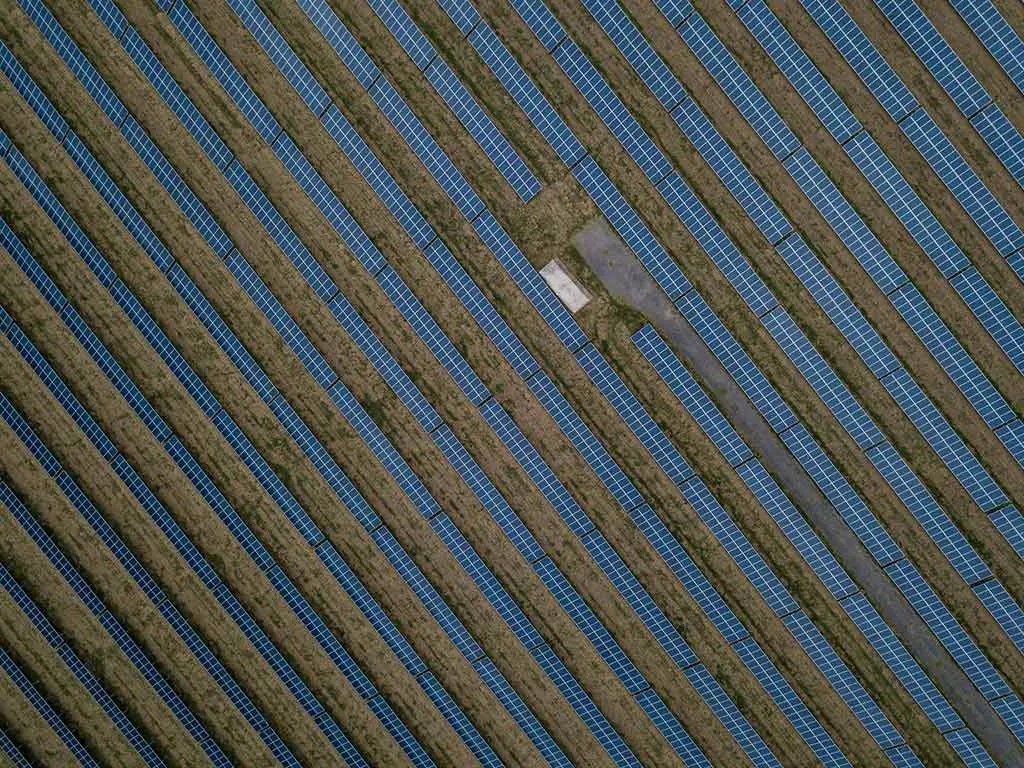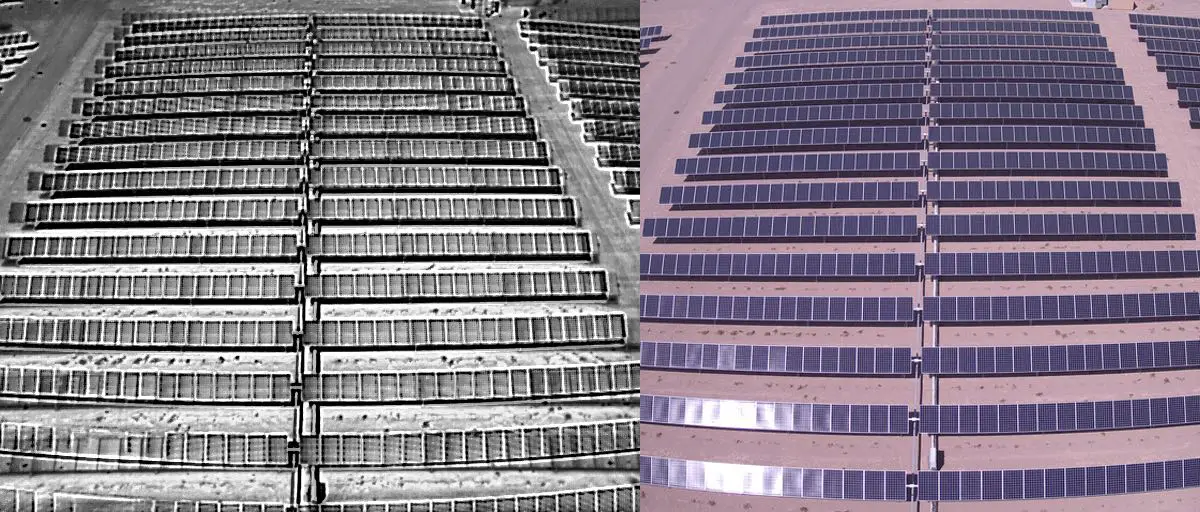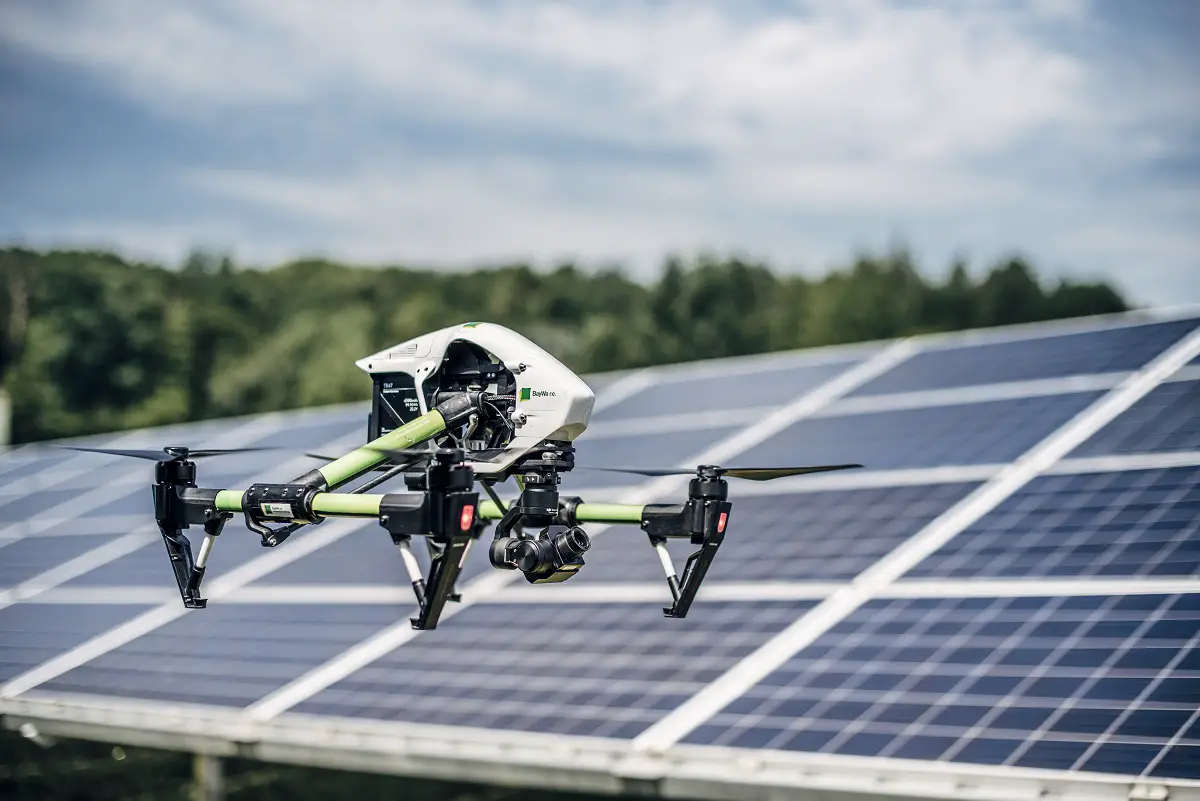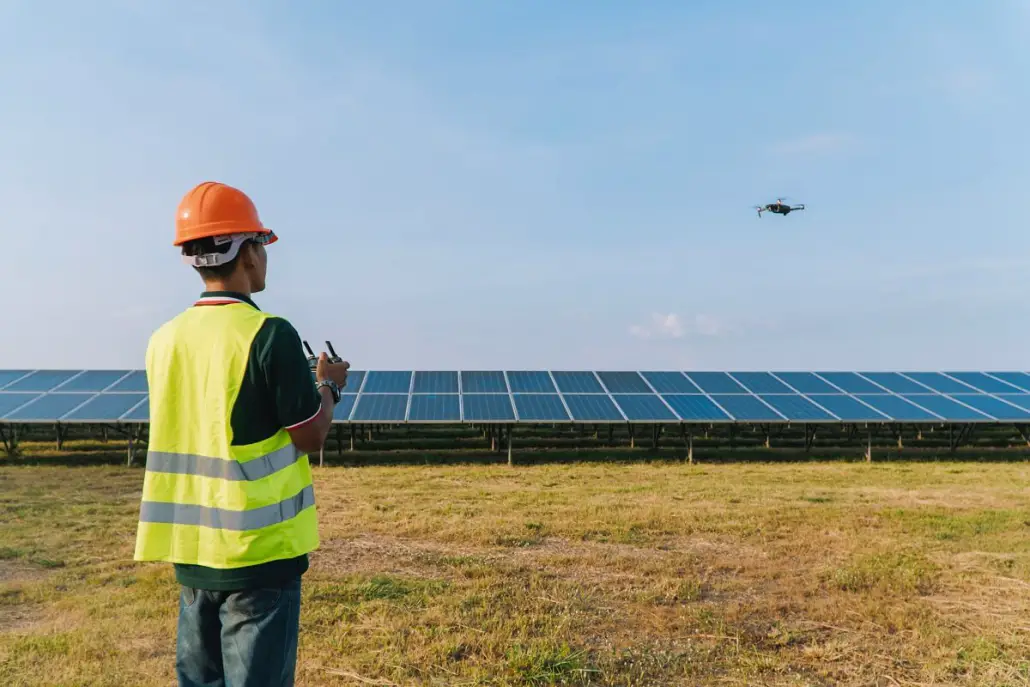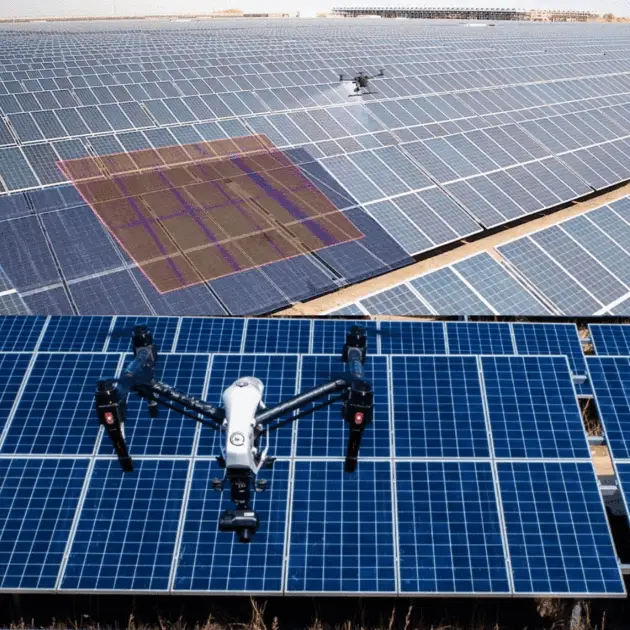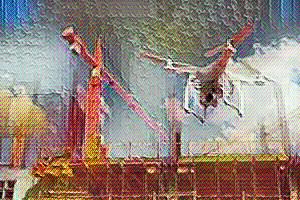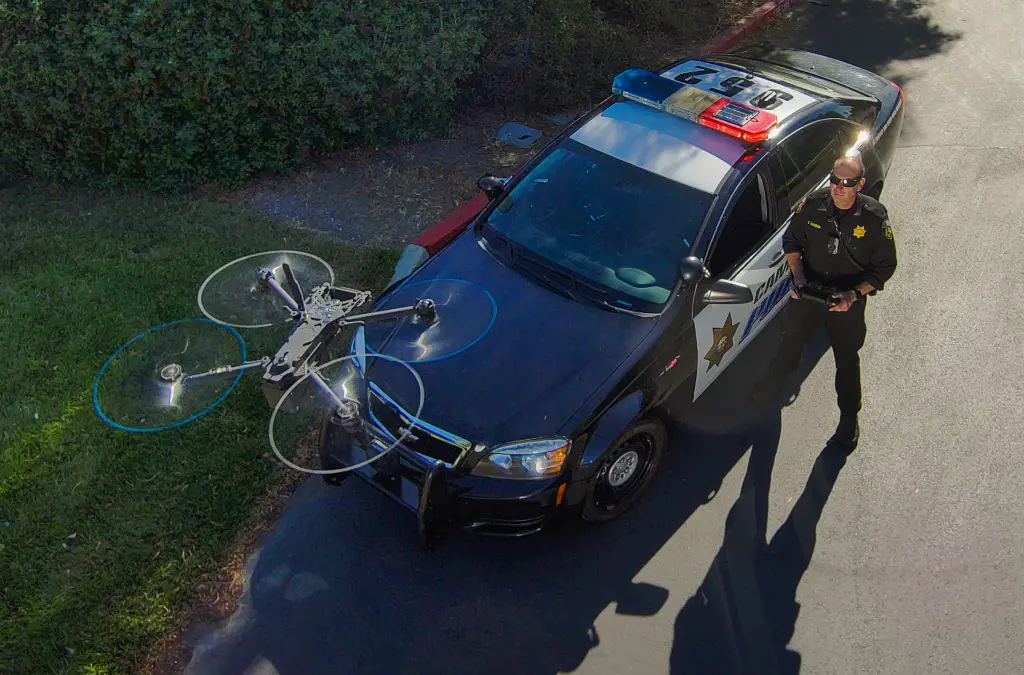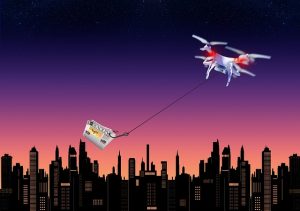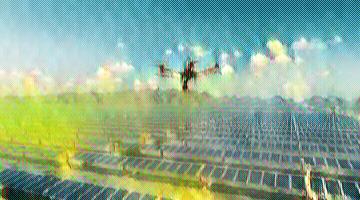
Solar Panel Inspection Drone
As the world shifts towards cleaner energy sources, solar power continues to gain prominence. With the installation of large-scale solar farms becoming increasingly common, there’s a growing need for efficient inspection and maintenance methods.
Traditional inspection methods, such as I-V curve tracing, are both labor-intensive and time-consuming. This is where drone technology has proven to be a game-changer in the solar industry, offering a faster, more accurate, and cost-effective alternative. This article explores the various advantages of using drones for solar panel inspection, the cameras and sensors used, the best drones for solar panel inspection, laws, and more.
Speed and efficiency of solar panel inspection drone
One of the most significant advantages of drone inspections over traditional methods is the sheer speed at which they can be conducted.
Drones can inspect 1 megawatt (MW) of solar panels in about 10 minutes, while I-V curve tracing takes 2 to 5 hours for the same. This increase in efficiency results in considerable time savings, particularly for larger solar farms.
A case study by Measure found that drone inspections increased inspection efficiency by 97% compared to manual inspection. This operational efficiency translated into an average cost savings of $1254/MW.
In the context of larger solar farms, manual inspection becomes even more time-consuming and expensive, and may also lead to interruptions in power generation. According to Nanonets, for a solar plant with 200,000 PV modules spread over 250 hectares, manual inspection with a team of three people would take more than a month, whereas drone inspection can cover the same 250 hectares in just two days.
Comprehensive data collection using drones
Traditional I-V curve tracing is a manual electric testing system that is currently the standard practice for PV systems. Due to its higher cost and labor limitations, I-V tracing is typically used at the combiner and string level, and more testing is required for module-level inspection.
On the other hand, drones can use aerial thermography to cover an entire PV system while collecting data for every module.
This comprehensive data collection allows for faster identification of potential issues and a more detailed analysis of the solar farm’s performance.
Drones enable automation and advanced imaging
Drones offer the ability to automate the manual and highly cumbersome task of large solar farm monitoring. They can be programmed with flight path planning algorithms and equipped with both RGB (Red, Green, Blue) and thermal cameras.
Such a drone-based system can autonomously inspect the entire solar farm, streamlining the inspection process and reducing human error. Additionally, implementing an image processing algorithm enables drones to process RGB and thermal images for automatic fault detection.
This level of automation speeds up the inspection process and enhances the accuracy of fault detection, leading to more efficient maintenance and improved solar farm performance.
Drone solar panel inspection provides increased safety and accessibility
Inspecting solar farms can be a hazardous job, particularly when it involves climbing onto rooftops or navigating through large-scale installations.
By using drones for solar panel inspection, technicians can avoid potential safety risks associated with manual inspection methods. Drones can easily access hard-to-reach or dangerous areas of the solar farm, reducing the need for personnel to perform risky tasks.
Improved maintenance and decision-making
The detailed, high-resolution data provided by drone inspections allow for more informed decision-making when it comes to solar farm maintenance.
By identifying potential issues quickly and accurately, operators can prioritize maintenance tasks and allocate resources more effectively. This, in turn, leads to increased system performance, longer equipment lifespans, and, ultimately, a higher return on investment for solar farm owners.
Best drones for solar panel inspection
- Mavic 2 Enterprise Advanced
- DJI Matrice 210 V2
- DJI Matrice 300 RTK
- Parrot ANAFI Thermal
- Autel Robotics EVO II Pro RTK
What types of cameras and imaging technologies do drones use for solar panel inspections?
Drones used for solar panel inspections typically employ a combination of imaging technologies to effectively assess the condition and performance of the panels. Some of the most common camera and imaging technologies used for this purpose include:
High-resolution RGB cameras: These cameras capture detailed images of the solar panels in visible light, allowing for the detection of physical defects, dirt, debris, and other anomalies on the surface of the panels.
Thermal/Infrared cameras: Thermal cameras detect infrared radiation emitted by the solar panels and help identify heat distribution issues. Hotspots or cold spots in the thermal images may indicate malfunctioning cells, faulty electrical connections, or problems with the panel’s insulation.
Multispectral imaging: Multispectral imaging using drones has revolutionized solar panel inspection by providing a comprehensive and detailed analysis of the solar array. This technology efficiently detects obstructions, such as vegetation, and identifies potential panel damage or corrosion. As a result, multispectral imaging enhances the maintenance and performance of solar panels, ensuring optimal energy production.
Hyperspectral cameras: These cameras capture images across a wide range of the electromagnetic spectrum, providing even more detailed information than multispectral cameras. The high-resolution spectral data can help detect minute defects and subtle changes in the solar panels’ performance.
LiDAR (Light Detection and Ranging) sensors: LiDAR sensors use lasers to emit light pulses and measure the time it takes for the pulses to bounce back after hitting the solar panels. This technology allows for the creation of accurate, high-resolution 3D models of the solar panel array, which can be used to detect structural issues or optimize the panels’ alignment for maximum sunlight exposure.
These imaging technologies can be used individually or in combination to perform comprehensive solar panel inspections. By using drones for these inspections, operators can cover large areas quickly, safely, and cost-effectively, while minimizing the risk of damage to the solar panels or injury to personnel.
Are there any regulatory or legal considerations when using drones for solar panel inspections?
Laws and regulations may vary depending on your location, so it’s essential to consult with local authorities or legal counsel for accurate and up-to-date information.
Some general regulatory and legal considerations when using drones for solar panel inspections might include the following:
Licensing and certification: In many countries, commercial drone operators need to obtain proper certification and licensing before conducting any operations. For example, the Federal Aviation Administration (FAA) requires commercial drone pilots to obtain a Part 107 Remote Pilot Certificate in the United States.
Airspace restrictions: Certain areas may have restrictions on drone operations, such as near airports, military installations, or other critical infrastructure. Always check and adhere to local airspace regulations.
Privacy concerns: Using drones to inspect solar panels may raise privacy concerns, especially when operating in residential areas. Be aware of local privacy laws and take measures to protect the privacy of individuals affected by your drone operations.
Insurance: Commercial drone operators should consider obtaining liability insurance to cover potential damages or accidents that could occur during their operations.
Local ordinances and permits: Some jurisdictions may have specific regulations, permits, or restrictions regarding drone operations. Check with local authorities to ensure compliance with any relevant rules.
Safety and risk management: Develop and follow standard operating procedures and safety protocols to minimize the risk of accidents or incidents while conducting drone operations. This may include proper maintenance, pre-flight checks, and ensuring the drone is within the visual line of sight during operation.
Always consult with legal counsel or local authorities to ensure compliance with all relevant laws and regulations in your area. This information is not exhaustive or specific to your location and should not be considered legal advice.
Drone solar panel inspection – service providers
- Precision Hawk
- The Drone Life
- Drone Deploy
- Intertek
- Percepto
- Equinox’s Drones
- The Chandler Companies
- Viper Drones
Conclusion
Drone technology has revolutionized the solar industry, offering a faster, safer, and more cost-effective alternative to traditional inspection methods. By harnessing the power of aerial thermography, advanced imaging, and automation, drones have significantly improved the efficiency of solar panel inspections, leading to increased operational efficiency and cost savings.
The ability to rapidly inspect large-scale solar installations and collect comprehensive data for every module has made drone inspections invaluable for solar farm operators.
The enhanced safety and accessibility offered by drones allow technicians to perform their jobs without being exposed to unnecessary risks, while the detailed data gathered enables better decision-making for maintenance and resource allocation.
As the solar industry continues to expand and evolve, drone technology is poised to play an increasingly crucial role in optimizing the performance of solar farms. By embracing this cutting-edge approach to inspection and maintenance, solar farm operators can ensure the longevity and success of their investments, contributing to a more sustainable energy future.
Aerial images provide a broader perspective of solar farms and allow maintenance teams to receive valuable information in real-time, like the status of each ...
Using drones in the solar industry both opens up new possibilities and replaces existing work. Without drones, inspections are typically completed manually. ...
One of the studies demonstrated that the drone inspections are 97% faster than manual inspections for solar panels. Cost savings due to efficiency gains ...
During traditional thermographic inspections of rooftop solar fields, there is rarely enough space to crawl under the panels to get straight-on, close-up ...
For aerial solar inspections and any drone inspections in the US, the drone pilot will need to obtain their Part-107 ‘Remote Pilot Certificate’ license, read ...
Operational in just 55 seconds, Parrot’s ANAFI USA drone uses an integrated FLIR Boson Thermal sensor and a powerful 32x zoom, to detect centimetric hot spots ...
Thermal camera systems offer an essential diagnostic tool for the hot spot problem. Since hot spots emit heat, they show up on thermal images (thermograms) as ...
Drone flights equip workers to survey roofs before panel installation, allowing planners to take structure, depth and other factors into consideration via ...
Drones are revolutionizing how solar farms are inspected, operated, and maintained. They’re making solar site inspections faster, safer, and delivering more ...
In manual solar field inspections, time and resources don’t allow for every unit to be checked, which often leaves anomalies overlooked. Drones can perform ...
The use of drones for solar field inspection has been rapidly increasing over the last few years. Traditional assessments using field engineers and hand-held ...
Drones are inexpensive, easy to deploy, and simple to operate. Using them for PV system inspections makes processes more accurate and straightforward than ever ...
Aerial thermography inspection is the most efficient way for solar PV operations and maintenance (O&M) teams to identify and repair malfunctioning solar ...
Drones are capable of capturing visual and thermal imaging at a very high resolution, with the ability to see photovoltaic modules and other components of the ...
As the world shifts towards cleaner energy sources, solar power continues to gain prominence. With the installation of large-scale solar farms becoming ...
Ground inspection does not provide the necessary imagery and entire testing of the solar panels the same way that an aerial thermal imagine does. A UAV ...
The use of UAVs to inspect large PV plants has grown significantly over the years, thanks to their superiority in field coverage, reliable imaging, quick ...
Before the installation occurs, drones can be used to survey the entire area. A drone survey will indicate which areas are going to be in the sunlight most ...
Drones have become a vital tool for solar panel inspections, collecting data more than 50x faster than manual methods and improving safety by avoiding ...


